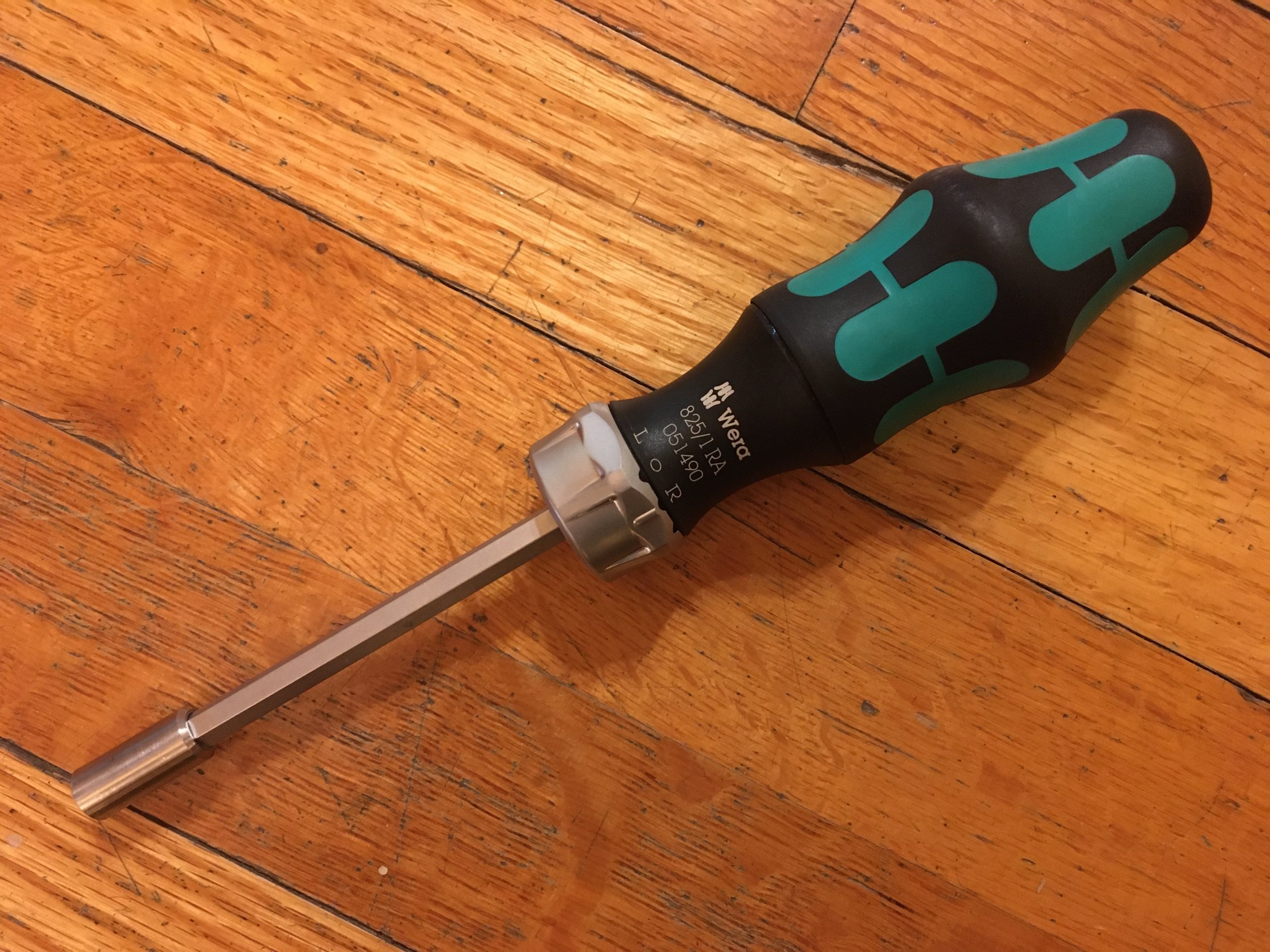Ratcheting screwdrivers, Husky versus Wera
Until last month I’d never bought a ratcheting screwdriver.
Why? I’m not exactly sure. Perhaps I distrusted the mechanism and preferred the extra (assumed) reliability of a standard screwdriver. Perhaps out of a misplaced sense of purity.
In any case, recently I was faced with the fun but monumental task of duplicating, as much as possible, my entire Tucson tool collection for our new place in Fairbanks. Obviously this involved a whole bunch of compromises, since we’re talking about a decades-long accumulation. And it will have to be accomplished incrementally, the most critical tools first. But the cabin needed several important repairs and upgrades, so I had to cover the basics quickly.
Screwdrivers were high on the list. I’d brought a few with me in the cargo trailer in which I hauled our furniture and household goods, but I needed a selection of bits for some weird fasteners I’d found in the cabin. At the Fairbanks Home Depot I found a $20 Husky ratcheting screwdriver with a selection of bits stored in the base of the handle, and decided to try it.
It didn’t take long before I discovered the advantages of the concept. It wasn’t always advantageous, and frequently I left the ratcheting mechanism locked out, but in certain circumstances it made inserting or removing fasteners much faster and more convenient. I was definitely sold on the concept.
However. The Husky tool itself proved problematic. First, the ratcheting mechanism felt coarse, which meant wasted motion turning it back and forth as the excess slack had to be taken up each time—even when it was locked. Much worse, however, was the bit storage, accessed by a ribbed cap in the base. Illogically, the cap was tapered so you pulled on the narrowing butt of the grip, backwards for optimal use. It was so hard to grasp that I took to opening it with my teeth. And it didn’t open smoothly but with a jerk—which meant that half the time it maddeningly spit one or several bits out onto the floor. Do these companies ever conduct beta testing?
Sigh . . . Wondering if there was something better, I did a search, and . . . aha. A German company with which I’m familiar, Wera, made one, model KK 27 RA2. For, naturally, two and a half times what the Chinese-made Husky had cost. Nevertheless, I ordered it. Sadly by the time I did so I was due to leave Alaska for Tucson, so I had it sent south. Thus I have no side by side photos (although thanks to the magic of digital publishing I can edit later).
So, is it two and a half times better than the Husky? Maybe not—the Husky, after all, will do the same job—but it’s satisfyingly way better. The ratcheting mechanism is much smoother and finer, and the bits are held securely in the center of the grip, accessed by a sliding port activated by a button at the end of the grip. Both complaints about the Husky solved—and, in addition, the Wera has a much nicer grip and a stronger magnet to secure the bits. It’s a joy to use, rather than merely okay. The Wera has become the screwdriver I reach for first for many jobs, both household and automotive.



